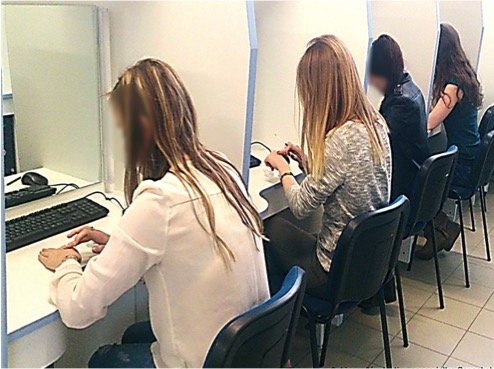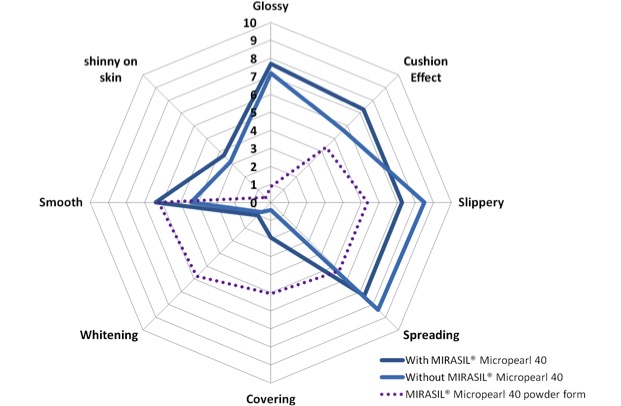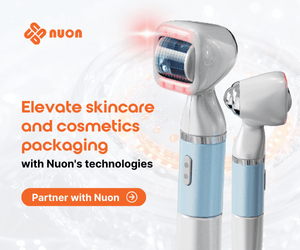Francois Bouton
Brenntag Cosmetics, EMEA
It is the way the product looks, feels, performs, effects the mood, creates a special “me time” experience. A scent of a product has immense powers to trigger purchasing behaviour, and helps to create a strong brand loyalty when introduced as part of product launch marketing strategy.
Sensory evaluation studies are performed in order to obtain full sensory profile of the cosmetic product. Research on sensory evaluation needs to be linked to research on product aesthetics, product meaning, and product emotions. Cosmetic ingredients are developed for their technical functions- but also for specific sensory targets.
Aspects of a successful cosmetic product include efficiency, safety and sensory characteristics- which improve consumer acceptability and has a definite uplift impact on sales. Brenntag specifically looked at sensory evaluation techniques- in particular powders in skin formulations during one of our recent projects in partnership with Ecole de Biology Industrielle (EBI), France.
The powders are ingredients increasingly used outside of the traditional colour cosmetics segment (providing soft after-feel) in the formulation of cosmetic products for the sensory qualities they give. For instance, in skin care and sun care, powders can improve the performance and enhance the feel of the skin, providing a number of several sensory attributes such as powdery, silky and velvety.
Literature review highlighted the lack of research on the impact of powders on formulations. A real need has appeared to characterise powders with discriminant sensorial attributes because these ingredients are widely used for their sensorial properties in cosmetic products, and to develop a well-defined and documented lexicons support this level of sensory research.

Evaluation by the expert-Panel EBI Sensolab (France)
The research allowed to develop a sensory protocol of evaluation for pure powders and for emulsions containing these ingredients, using an expert panel (more information is available in the research study). Our objectives were two fold: to obtain a lexicon and a reference adapted to the calibration and validation of a panel, and to evaluate the influence of the presence of the powders on the sensorial properties of the formulated products. Panel of experts created a reference based on 12 cosmetics powders of different chemical nature; the selected attributes were then used for performing a quantitative descriptive profile of the powders as well as a formulated emulsion containing them. The lexicon established through a consensus approach of the panel contained eight attributes that allow the evaluation of the powders in four phases: the appearance (gloss), the pick-up (cushion effect, slipperiness), the application (spreadability, covering, whitening), and the after- feel (e.g. smoothness, shine on skin)*
We've used the quantitative descriptive profile which showed significant differences in sensory level. the same attributes were used to evaluate the performance of the emulsion with and without the powder, this helps to assess the contribution of powders on the sensory specificity of the emulsion.
A number of formulations were used for sensory evaluation. For instance, an emulsion prototype was formulated to evaluate the sensory impact of MIRASIL ® Micropearl 40 (Bluestar Silicones), which is a polymethylsilsesquioxane powder in a spherical shape that promotes the light diffusion, develops a ball bearing and soft-focus effects and known to improve softness on skin and reduces tackiness of sunscreen agents.

Radar obtained by the method of quantitative sensory profile
Qualitative sensory profile has been obtained for a number of raw materials and formulations such as free Powder (MIRASIL ® Micropearl 40 sensory profile), emulsion without MIRASIL ® Micropearl 40 sensory profile, and emulsion with MIRASIL ® Micropearl 40 sensory profile. Results showed significant increase of the cushion effect & smoothness of the emulsion, as the addition of powders lead to sensory modifications of the emulsion (5.5%). Therefore the addition of MIRASIL ® Micropearl 40 (at 5.5% of concentration) into the emulsion increases the cushion effect and the smoothness significantly without affecting the slipperiness and the spreadability.
Brenntag Cosmetic Europe is now extensively using this sensory analysis lexicon and method to continue to characterise our portfolio of powders and provide a better technical service to customers. The research, along with various briefs our Brenntag teams receive, gave us an idea for our latest concept, "The Feel of Luxury", which we presented at the latest SCS Formulate in the UK. We focused on further exploring inspiring textures and sensorial attributes that innovative ingredients can bring to cosmetics products. Having presented at the SCS Formulate to the delegates I am excited at the level of knowledge and engagement of the industry colleagues, and am looking forward to in-cosmetics 2017 in London.
*for powders and emulsions that contain powders (1)
References
- M. Moussour, M. Lavarde, A.-M. Pense-Lheritier, F. Bouton (2016) Sensory analysis of cosmetic powders: personal care ingredients and emulsions, International Journal of Cosmetic Science, 2016, 1–7 doi: 10.1111/ics.12352
- Lukic, M., Jaksic, I., Krstonosic, V., Cekic, N., and Savic, S. (2012) A combined approach in characterisation of an effective w/o hand cream: the influence of emollient on textural, sensorial and in vivo skin performance. International Journal of Cosmetic Science, 2012 Apr; 34(2) pp. 140–149
- Kemp et al (2009) Sensory Evaluation: A practical handbook, Wiley Blackwell


